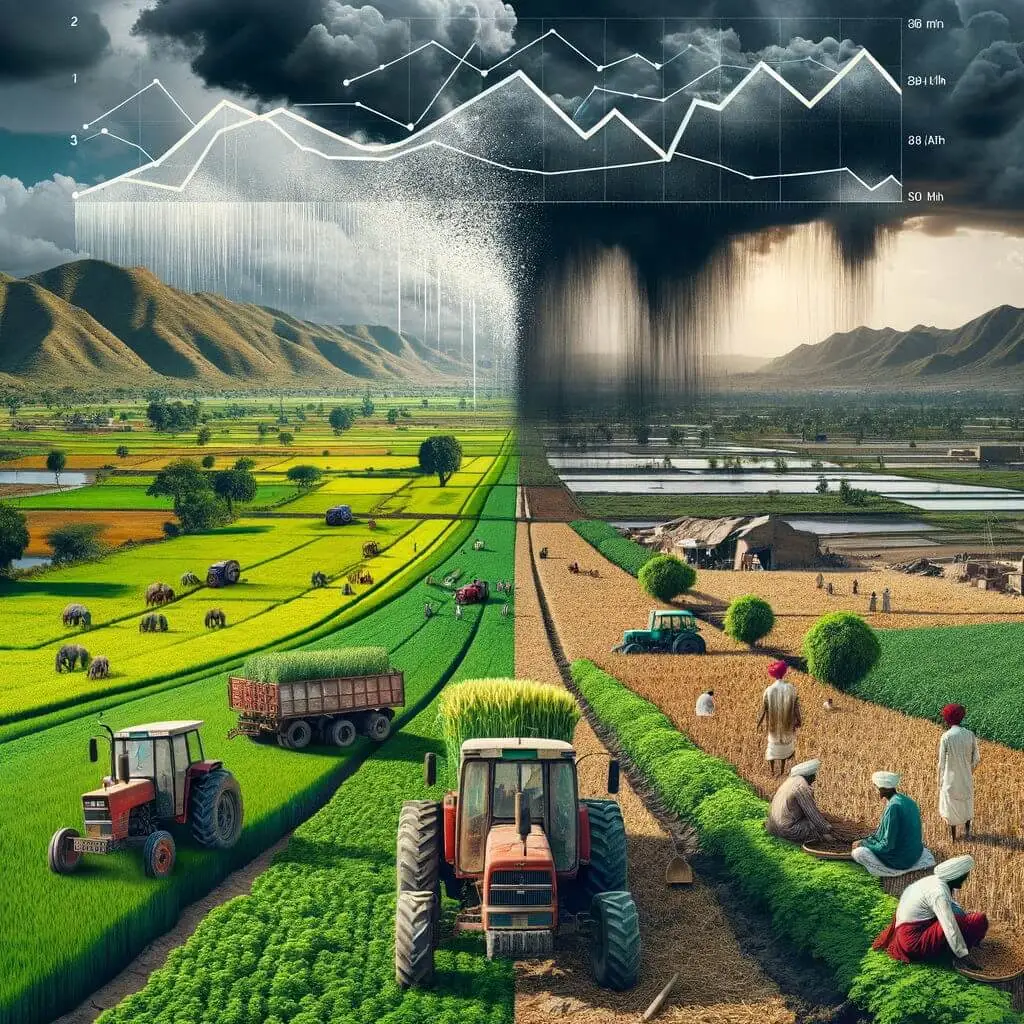The Current Crisis in Indian Agriculture
India’s Agri Ministry Data Shows Expected 9 Million Metric Tonne Decrease in Foodgrain Output for 2022 Kharif Season.
In a recent turn of events, India’s agricultural sector has encountered a significant setback. The growth in this sector has fallen to its lowest in over four and a half years. The primary culprit? An erratic monsoon season that has played havoc with crop yields and farming schedules. This is where we need to think about the need of reshaping the Indian Agriculture landscape.
The July-September quarter, crucial for the agricultural sector, witnessed a drastic fall in growth to 1.2%, a steep decline from the 3.5% recorded in the preceding quarter. This downturn is not just a statistic but a reflection of the challenges faced by millions of farmers across the country.
The Monsoon’s Role in Agricultural Variability

India’s agriculture is heavily reliant on the monsoon season. Approximately 51% of the total agricultural land in India is rainfed, contributing significantly to the country’s food production. However, this year, the monsoon has been anything but consistent. The season started with a delayed onset, followed by a period of heavy rainfall, exceeding normal levels by 13% in July. Just when farmers started to adapt to this pattern, August brought a drastic change – a 36% deficit in rainfall, the driest August since the early 20th century.
Direct Impact on Kharif and Rabi Crops
This variability in rainfall has had several direct consequences. First and foremost, the kharif (summer) crop, which includes vital grains like rice and millets, has been severely affected. The Ministry of Agriculture and Farmers Welfare, in its initial estimates, projects a decline of about 9 million metric tonnes in foodgrains compared to the previous year. This is not just a number but a potential threat to food security and livelihoods.

The impact extends beyond just the kharif season. The rabi (winter) sowing season has also suffered. Critical crops like wheat and pulses are lagging behind the previous year’s levels by 5% and 8.5%, respectively. This slow pace can be attributed to the uncertainty surrounding the monsoon and its aftermath, including the state of soil moisture and reservoir levels.
Speaking of reservoirs, their water levels are significantly below historical averages, especially in the southern and eastern parts of India. This situation is likely to affect not only the current rabi season but also the upcoming agricultural cycles.
The erratic monsoon has taken its toll on various crops. Sugarcane and paddy yields have dipped. The pink bollworm infestation has adversely affected cotton productivity. The unseasonal rains have also impacted the production of vegetables and fruits like tomatoes, onions, and apples. These are not just agricultural products; they are essential components of the Indian diet and economy.
Government Response: Increasing MSP
The government, in response to these challenges, has increased the Minimum Support Price (MSP) for wheat by a significant 7%, the highest increase in over a decade. This move is aimed at encouraging farmers to continue sowing wheat despite the unfavorable conditions. However, the effectiveness of this measure remains to be seen.
The repercussions of this agricultural downturn are manifold. Financial institutions like ICRA have projected a sharp decline in the growth of agriculture, forestry, and fishing sectors to a mere 1.0% in the second quarter of the fiscal year 2024. This is not just an agricultural crisis; it’s an economic one.
Furthermore, the continued threat of the El Nino phenomenon, which disrupts normal weather patterns, casts a long shadow over the future of Indian agriculture. Experts like Madhavi Arora, a lead economist at Emkay Global, predict that if the current trends continue, agricultural growth might not surpass 1.5% in this fiscal year.
The Need for Resilient Farming Practices
In conclusion, the situation is a stark reminder of the vulnerabilities of Indian agriculture to climatic anomalies. It highlights the need for more robust and climate-resilient farming practices and policies. While the government’s efforts to support farmers through increased MSP are commendable, there’s a pressing need for long-term strategies that address the core issues of water management, crop diversification, and technological advancements in agriculture.
As we move forward, it’s crucial to monitor how the situation unfolds and how effectively the government and the farming community adapt to these unprecedented challenges. The future of Indian agriculture, and by extension, the Indian economy, hinges on the collective ability to navigate through these turbulent times.